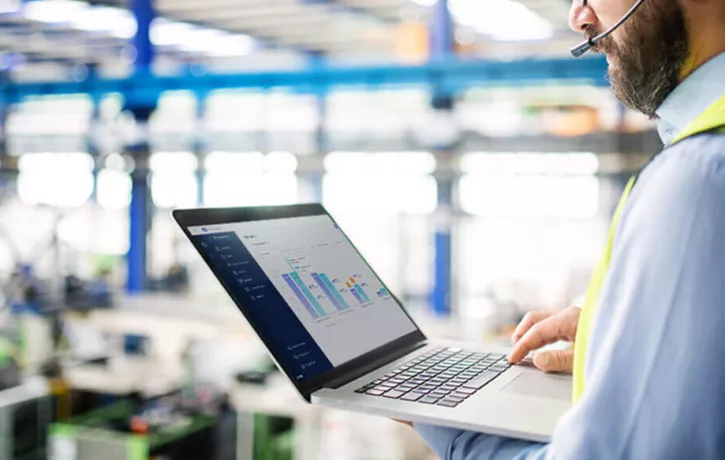Technology-driven disruption is transforming supply chain management from top to bottom.
While change can be challenging and many may be hesitant to adopt new business processes, there are clear benefits to digital transformation in the supply chain.
For example:
- In a survey by Deloitte, 76% of respondents from a variety of industries said developing digital and analytics capabilities was most important/very important to delivering the overall supply chain strategy
- Top digital adopters in a survey by PwC saw technology-powered improvements such as increased revenues, decreased costs, more reliable delivery, and reduced inventories
- McKinsey predicts that by 2030, an entirely new logistics paradigm could unfold, powered by emerging technologies such as 3D printing, robots, analytics, and more
Like many other business functions, technology will radically transform supply chain management. Below, we’ll explore a few trends to watch in the months and years to come.
How technology is changing supply chain management
Here are a few instances that demonstrate how both digital and physical technologies are affecting supplier management and even the very structure of the supply chain.
The blockchain offers end-to-end supply chain visibility
Blockchain technology can increase supply chain transparency, resiliency, and efficiency, by ensuring that data is trusted and secure.
According to IBM, many problems with supply chain data can be traced back to human error and inefficiency.
In one of their surveys, more than 70% of supply chain leaders reported significant improvements in data “quality, integrity, visibility, and speed” when human intervention was removed.
By providing a single, real-time source of truth, blockchain—or distributed ledger technology—removes unnecessary complexity, while offering reliable insights across the entire supply chain.
Those enhanced insights can then offer significant improvements throughout the entire supply network, from greater resiliency to improved performance to shifted expectations among vendors, partners, and customers.
Automation can cut costs in freight shipping, logistics, and delivery
While Amazon has certainly made headlines with its impending adoption of drone delivery, this retail giant isn’t the only company leveraging new technology to streamline its delivery services.
UPS has adopted a number of AI-powered solutions designed to enhance the customer experience, reduce delivery costs, and more.
A few of their methods include:
- ORION, a proprietary route optimization tool, that is expected to slash over 100 million delivery miles
- EDGE, an internal logistics and operations platform, that uses real-time data to help employees make more informed decisions
- Testing drone delivery in their own bid to keep up with Amazon’s ambitious plans
UPS is only one example among many companies that are automating and digitizing their supply chains.
In the near future, we can expect to see more automation across every point in the supply chain, from robots to autonomous ships.
Supply chain management software upgrades workforce productivity
As workplaces become more digital and integrated, new software solutions are necessarily replacing old ones.
Supply chain platforms such as Oracle Fusion Cloud SCM, Requis, Suuchi, and SAP’s supply chain management software—among many others—are designed to provide comprehensive solutions for today’s digital-first supply chain.
Features of these platforms naturally vary from vendor to vendor, and each has its target audience and set of use cases.
Some features of these platforms include:
- Dashboards that combine supply chain managers’ most-performed tasks into a single location
- Project management, communication, and collaboration tools
- Real-time data, analytics, and reporting
- Transportation management
- Dynamic inventory allocation and management
The most advanced of these platforms are designed with digital innovation in mind and are ready to integrate emerging technology, such as AI and the Internet of Things (IoT).
Emerging technology will enable autonomous supply chains
When we look at trends such as autonomous supply chain planning and autonomous manufacturing, it’s easy to understand why some professionals use the term “autonomous supply chains.”
After all, nearly every stage in the supply chain is primed for automation.
Autonomy will influence supply chains in the following ways:
- AI in procurement will increasingly augment tasks currently performed by humans, including decision-making tasks that are currently relegated to humans, such as spend analysis, supplier assessments, and compliance
- Year by year, 3D printing and robotics are increasingly automating manufacturing, increasing efficiency and decreasing production timelines
- As we saw above, automation also means that fewer humans will be needed to carry out technical and manual operations in freight forwarding, logistics, and delivery, which will likely result in a leaner workforce
- Autonomous supply networks will be more reliable, less prone to error, more cost-efficient, and more sustainable, among other things
While humans will always remain in the supply chain loop to a certain extent, we can certainly expect to see more and more digital autonomy in the years ahead.
Final thoughts
The trends covered above carry many implications for supply chain management, business leaders, and employees.
To ensure employees remain productive and relevant in driving digital transformations forward, upskilling and cross-training employees will be mandatory. This is only one of many reasons why digital adoption and in-house training programs have begun to grow so rapidly in recent years.
While automation is one of the primary concerns for many workers, this shift is only the tip of the iceberg.
Digital transformation in the supply chain promises to influence customer expectations, product development and distribution, supply chain resilience, and much, much more.


